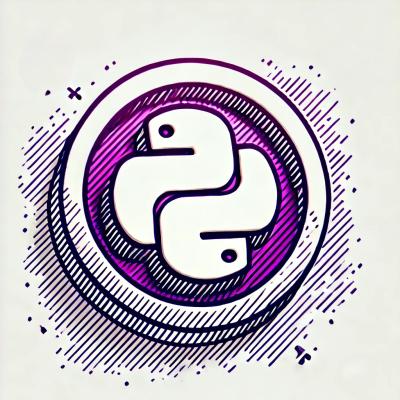Spline Runtime
runtime allows you to run Spline scenes in javascript.
Install
yarn add @splinetool/runtime
or
npm install @splinetool/runtime
Usage
To use runtime, first you have to go to the Spline editor, click on the Export button, select "Code" and then "Vanilla JS".
You can copy the URL there and pass it to the .load() function:
import { Application } from '@splinetool/runtime';
const canvas = document.getElementById('canvas3d');
const spline = new Application(canvas);
spline.load('https://prod.spline.design/6Wq1Q7YGyM-iab9i/scene.splinecode');
You should be able to see the scene you exported in your canvas.
:warning: Only .splinecode files should be loaded through this API. .spline files are meant to be used in the editor.
Read and modify Spline objects
You can query any Spline object via findObjectByName or findObjectById.
(You can get the ID of the object in the Develop pane of the right sidebar).
import { Application } from '@splinetool/runtime';
const canvas = document.getElementById('canvas3d');
const spline = new Application(canvas);
spline
.load('https://prod.spline.design/6Wq1Q7YGyM-iab9i/scene.splinecode')
.then(() => {
const obj = spline.findObjectByName('Cube');
console.log(obj);
obj.position.x += 10;
});
Listen to events
You can listen to any Spline Event you set in the Events panel of the editor by attaching a listener to the Spline instance.
import { Application } from '@splinetool/runtime';
const canvas = document.getElementById('canvas3d');
const spline = new Application(canvas);
spline
.load('https://prod.spline.design/6Wq1Q7YGyM-iab9i/scene.splinecode')
.then(() => {
spline.addEventListener('mousedown', (e) => {
if (e.target.name === 'Cube') {
console.log('I have been clicked!');
}
});
});
You can find a list of all of the Spline Event listeners in the API section.
Trigger Spline events from outside
You can trigger any animation Event you set in the Events panel in the Spline Editor.
You can use the emitEvent function, passing the event type and the name or ID of your object.
(You can get the ID of the object in the Develop pane of the right sidebar).
import { Application } from '@splinetool/runtime';
const canvas = document.getElementById('canvas3d');
const spline = new Application(canvas);
spline
.load('https://prod.spline.design/6Wq1Q7YGyM-iab9i/scene.splinecode')
.then(() => {
spline.emitEvent('mouseHover', 'Cube');
});
Or you can query the spline object first, and then trigger the event:
import { Application } from '@splinetool/runtime';
const canvas = document.getElementById('canvas3d');
const spline = new Application(canvas);
spline
.load('https://prod.spline.design/6Wq1Q7YGyM-iab9i/scene.splinecode')
.then(() => {
const obj = spline.findObjectByName('Cube');
objectToAnimate.emitEvent('mouseHover');
});
You can find a list of all of the Spline Events you can pass to the emitEvent function in the Spline Events section.
Preloading your scene
You might want to start the loading of .splinecode file before your code is loaded. It's possible using a HTML preload Link tag. Doing so will only save a little time by ensuring the spline file loading starts before your scripts are done loading. Since internally the .splinecode file will be loaded through a fetch call, you can do it like this :
<html>
<head>
<link rel="preload" href="https://prod.spline.design/6Wq1Q7YGyM-iab9i/scene.splinecode" as="fetch"
</head>
spline.load('https://prod.spline.design/6Wq1Q7YGyM-iab9i/scene.splinecode', {
credentials: 'include',
mode: 'no-cors',
});
API
Spline Application Methods
You can call all these different methods on the Spline Application instance.
emitEvent | (eventName: SplineEventName, nameOrUuid: string) => void | Triggers a Spline event associated to an object with provided name or uuid in reverse order. Starts from first state to last state. |
emitEventReverse | (eventName: SplineEventName, nameOrUuid: string) => void | Triggers a Spline event associated to an object with provided name or uuid in reverse order. Starts from last state to first state. |
findObjectById | (uuid: string) => SPEObject | Searches through scene's children and returns the object with that uuid. |
findObjectByName | (name: string) => SPEObject | Searches through scene's children and returns the first object with that name. |
setZoom | (zoom: number) => void | Sets the initial zoom of the scene. |
setSize | (width: number, height:number) => void | Sets the size of the application and canvas. When called, Spline will stop automatic size updates. |
Spline Events
These are all the Spline event types that you can pass to the emitEvent or emitEventReverse function.
mouseDown | Refers to the Spline Mouse Down event type |
mouseHover | Refers to the Spline Mouse Hover event type |
mouseUp | Refers to the Spline Mouse Up event type |
keyDown | Refers to the Spline Key Down event type |
keyUp | Refers to the Spline Key Up event type |
start | Refers to the Spline Start event type |
lookAt | Refers to the Spline Look At event type |
follow | Refers to the Spline Mouse Up event type |



